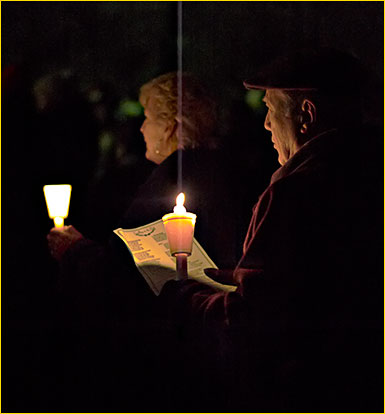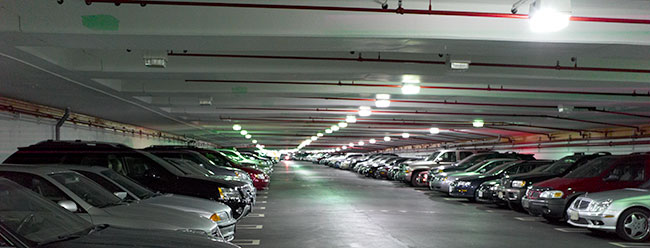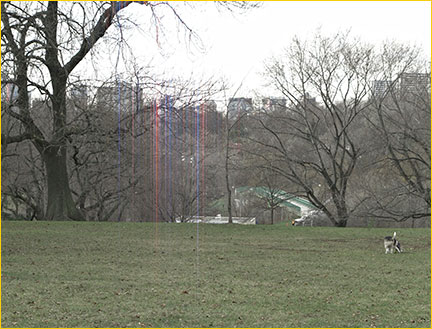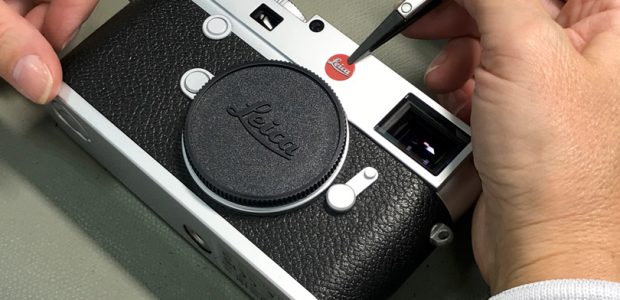The launch of theLeica M8has been a rocky road. The initial release of cameras suffered from a number of problems, including bright light streaking and green ghosting. These have been fixed through a factory recall of the first batch of cameras, and all cameras shipped since late December have sorted this out. The firmware in these new and updated cameras is 1.09.
A more onerous and long-term issue is the M8’s very strong infrared sensitivity. This has been written about extensively here and elsewhere. It is caused as a result of the fundamental design requirements involved in making an M digital camera, due to the extremely short distance between the rear of M lenses and the sensor plane.
The issue though is that this IR sensitivity causes certain materials which should be black to appear magenta, and also unwanted shifts in other colours. Whether the company saw this and knew about it prior to first product shipment is a mystery, and likely will remain so until someone in the know retires and writes their memoirs. But the fact remains that the problem is there.
The only solution is to use an infrared blocking filter on the lens. (Please don’t write to say that they should redesign the camera or sensor so that an IR filter can be incorporated there, as it is with other cameras. Apparently It can’t.) Leica is now offering two free IR blocking filters when they register their camera to anyone who buys an M8, though these filters won’t actually be available until February. At that time the camera’s firmware will need to be upgraded again to Version 1.1 (do-able online) so that lenses wider than 35mm can have compensation applied for cyan shift at the corners when an IR filter is used. Yes, I know, problem on top of problem.
But, before making a new assessment let’s look at the problems thathavebeen addressed.
__________________________________________________________
Bright Light Streaking
This is an insidious problem. I never saw it until well after the problem had been identified by others, even though I had shot close to 2,000 frames with my initial review M8. I just hadn’t been in a situation where it showed up. But when I did, an evening photographing Christmas carolers outdoors at night with lanterns and candle light, it showed in dozens of frames.

To the best of my ability to test, this problem has now been solved in shipping cameras as of late December, ’06.
__________________________________________________________
Green Ghosts
One of the less obvious problems was that of the green ghosts. Below is an example, and you can read more about it in myM8 Solutionarticle.

To the best of my ability to test this has now been eliminated in shipping cameras as of late December, ’06.
__________________________________________________________
Infrared Sensitivity & Filers
The use of a 486 series IR blocking filter on the lens completely eliminates the IR-caused magenta cast problem. That’s the good news. Leica is also providing two free filters with every camera. That’s also good news. The bad news is that these filters will not become available until February, and since most Leica owners have more than two lenses it will mean the necessity of buying additional ones as well.
Of course the problem is more than the cost of a few filters and having to wait for them. The real issue is how one feels about using filters – any filters – on ones lenses. I’m not a filter kind of guy. I’ll use a UV filter as lens protection when it’s raining or snowing to make it easier and faster to clean water droplets off the front of the lens. But other than that, and a polarizer on my SLRs when needed, I always shoot without filters.
My concerns about the use of filters are additional flare, for one thing. Catch the light at the right angle and flare is going to happen. Also, having the filter so far forward means that its easier for fingerprints to accumulate, since an M Leica is the type of camera which one holds in ones hands when shooting rather than on a strap around ones neck or on a tripod.
Finally, the 486 type IR cut filter, though it looks clear from straight on, displays an eye-catching red glint when viewed from an angle. This could make the camera very obvious to some subjects. Definitely not the thing one wants from a discrete street shooting / documentary style camera.
The issue of lenses and filter use brings us to the topic of lens coding. Right now to get the best from ones Leica lenses they need to have the 6 bit coding that the company has been adding to all new lenses since since mid-’06. One can also send older lenses in to Leica and have them coded, for a fee.
The purpose of this coding is to allow the camera to know how much vignetting correction to apply to the file. As of V1.1 of the firmware, likely to become available in February ’07, this coding will also be used by the camera to compensate for cyan drift cased by the IR cut filters when used on wide angle lenses.
This matter of coding is an issue for anyone either not wanting to send in their lenses to Leica, those who use older screw mount lenses with an adaptor, or who use non-Leica lenses, such as those from Voigtlander and Zeiss. There is a solution in the form of putting ink marks on the lens mount with a black pen, but this isn’t permanent, and doesn’t work with some screw-to-M mount adaptors. ( Sean atReid Reviewshas comprehensive details on this as part of his 28mm lens comparison).
I would therefore strongly urge that Leica put manual lens selection into their next firmware update. They need to simply provide a listing of all Leica lenses, and make it access able via the rear LCD. The user could then choose their lens from the list when they put it on. One can’t, of course, expect Leica to include non-Leica lenses, but most users will find selecting a Leica brand lens from the list that has a similar focal length, to be sufficient. By including this "feature" Leica would be showing that it is paying attention to the needs of its customers, by providing an alternate solution to one of the camera’s annoyances.
__________________________________________________________
Newly Discovered Banding Issue

ISO 2500 pushed about the equivalent of 3 stops
As this is being written during the week before Christmas there are discussions raging on theLeica User Forumabout a new banding issue, or at least one that was just recently discovered. It appears that almost all current cameras display this problem, but to greater or lesser degrees. I don’t see this problem at all with my revised M8 at any ISO setting with normal images. I have to shoot at either ISO 1250 or 2500, and then crank up the brightness the equivalent of several stops till it shows. But others are reporting seeing the banding on images taken as low as ISO 640, and without any heroics needed to cause it to be visible.
This banding appears in the same place on everyone’s cameras, so it would appear not to be a firmware issue, but rather something at the hardware level. Tough to say, and Leica hasn’t yet publicly addressed the issue yet. I should hasten to add though that most people with new or updated cameras do not report seeing this phenomenon under normal shooting circumstances.
__________________________________________________________
Over the Rainbow

Here’s a problem that has apparently existed since day one, but which no one noticed until recently, myself included. I’ve discovered that these rainbow streaks are caused by taking a shot immediately after the camera comes out of sleep mode. This can be tested by allowing the camera to fall asleep and then holding down the shutter release. It happens every time. Not a big deal, but this too should have been caught by Leica during pre-release testing.
I would imagine that Leica can fix this in a future firmware update by simply delaying the shutter actuation by a fraction of a second longer after emerging from sleep mode. The only problem with this is that the M8 already takes much longer to wake up than I would like. We’ll see how this one pans out, but at least in the meantime knowing what causes it can help one avoid it happening.
__________________________________________________________
Of Dirty Laundry & Desert Islands
Well, there’s all the dirty laundry, for now at least. Some of these issues were seen early on, others weren’t. The conspiracy theorists will continue to rudely complain that I and some other early testers hid the truth. Nonsense. We just didn’t figure out what we we seeing soon enough, that’s all.
But now we do, and so it’s fair game to look at all of the camera’s problems openly so that both existing and prospective buyers can make up their own minds as to how serious they are, and whether they are worth putting up with.
I’m of two minds about the M8. After spending a week with my original review sample, I bought one, and have had no regrets whatever. More on this in a moment. The other side of the coin is that I have to hesitate to recommend an M8 purchase to anyone who is looking for a hassle-free digital camera. Only someone who is an experienced M Leica shooter, and who also is experienced with digital, will likely be comfortable dealing with some of the issues that an M8 owner will face. This isn’t a dissimilar situation to that faced by medium format digital owners, who have to contend with things like lens cast calibration. If you "get it", and can work with and around the problems, then you’ll reap the rewards. If you find this kind of thing a hassle, then the M8 is likely not for you.
Recently, while having a discussion about the M8 with a photographer friend who was weighing the pros and cons of purchasing one, I came up with the following thought experiment.
If I was told today that I could only use one camera and one lens for the rest of my life, what would it be? As regular readers know I own and shoot regularly with some pretty high-end gear, including a couple ofHasselblad H2/H1bodies with aPhase One P45back,Linhof 679system, as well as aCanon 1Ds MKII, aCanon 5D, and a mess of lenses for all of them.
But, even being aware, as I obviously am, of all of the issues with the M8, I would almost certainly choose it and the28-35-50mm Tri-Elmaras my one camera, one lens choice. The reason? Simply a special combination of image quality, size, and versatility. The M8 is only 10MP – not 12, 16 or 39 Megapixels. It can’t take stabilized supertelephotos, tilt / shift lenses or other exotica, can’t do 8FPS, or have a low noise ISO 3200, and a whole lot more. But, the M8 produces some of the most lovely image quality I’ve ever seen from any camera, film or digital, and when coupled with those remarkable Leica lenses is a hard combination to top. I also justseebetter with a rangefinder M Leica than I do with other cameras, at least for some types of shooting.
This is obviouslyjusta thought experiment. Fortunately I can continue to work with different tools for different assignments. But when it comes to taking a short trip, or a walk in the woods, or any situation where I need my camera to be small, discrete, and yet still produce very high image quality, the M8 is now my first choice, just as in past years an M3, M6 and M7 were.
Of course it’s annoying to have to use the IR filters when shooting colour. Fortunately though, like many Leica shooters I work mostly in B&W with this system, and so the filters can be left off much of the time. I also hope that with the next firmware update, V 1.1, some other issues and annoyances will be addressed. As well I’d like to see faster turn-on time (it’s among the slowest of current high-end cameras), and the power / shooting mode lever made stiffer, because it’s much too easy to accidentally knock off its intended position.
But in the end, as I wrote initially a couple of months ago – the only way you’ll take the M8 away from me isfrom my cold dead hands.
December, 2006
You May Also Enjoy...
The Leica Story – The M-Series Camera
FacebookTweet The Legendary Leica Camera When one thinks of Leica, the first thing that comes to mind is the M-series cameras. Many of us held a Leica in

